King Island is a beautiful and unique destination located off the northwest coast of Tasmania, Australia. This island is known for its rugged coastline, sandy beaches, and lush greenery.
One of the most captivating features of King Island is the diverse range of birdlife that can be found here. From majestic birds of prey to tiny songbirds, King Island has a remarkable array of avian species that call this place home.
This article will explore the different types of birds you can expect to see on King Island and why it is such a popular destination for birdwatchers worldwide.
King Island is a relatively small island located in the Bass Strait between the Australian mainland and Tasmania. It is known for its natural beauty and diverse birdlife.
Here are eight bird species that you might encounter on King Island:
1. Silvereye
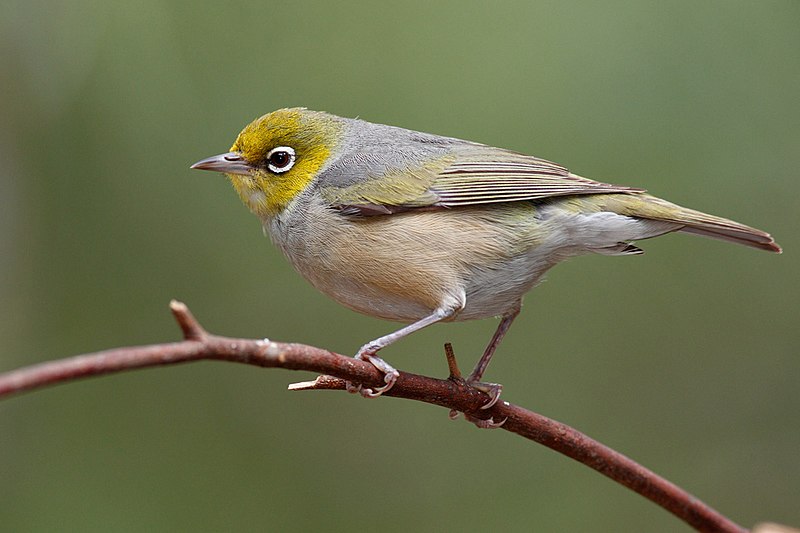
The silvereye, also known as wax-eye, is a tiny passerine bird native to the southwest Pacific region. It was first recorded in New Zealand in 1832, and there were greater numbers by 1856.
These birds are omnivorous feeders that make their home in open woodlands or gardens with lush vegetation.
Their plumage has greyish tones on top of their heads and wings, giving them a silver sheen look, which inspired their common name, ‘silvereye’.
The underside of these birds has white feathers, allowing for camouflage among foliage when they fly low over shrubs and trees seeking food such as nectar, insects and fruit.
They are social creatures who often flock together to share meals while communicating through their unique chirps.
Scientific classification:
| Kingdom | Animalia |
| Phylum | Chordata |
| Class | Aves |
| Order | Passeriformes |
| Family | Zosteropidae |
| Genus | Zosterops |
| Species | Z. lateralis |
Also Featured In: New Zealand Birds, Birds that Live around Brisbane
2. Nankeen Kestrel
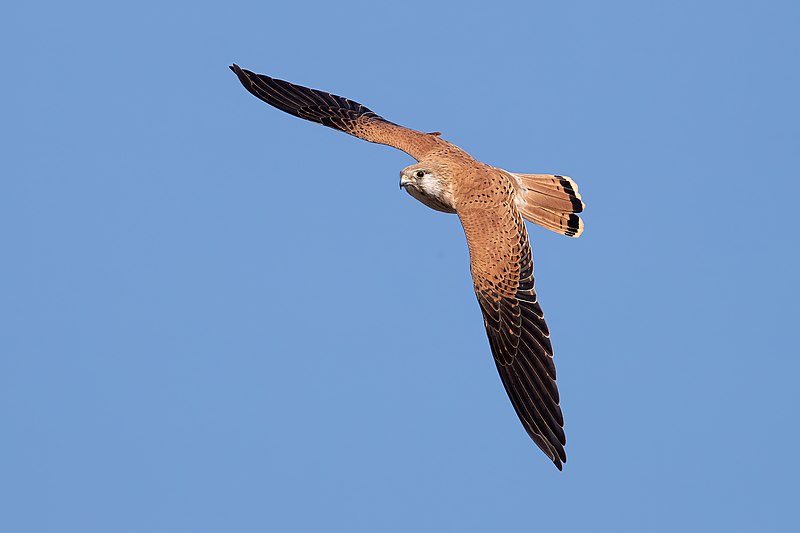
The nankeen kestrel is a small bird of prey native to Australia and New Guinea. Unlike many raptors, it does not rely on speed to capture its prey; instead, it perches in an exposed spot or hovers over fields and grasslands.
It belongs to the genus Falco, including other species like peregrine falcons.
This bird typically has cinnamon-brown upperparts with dark wings and tail, whilst its underside is usually pale buffish-white colouring with narrow black barring across the chest area.
Its diet consists mainly of insects but can include reptiles, amphibians, mice and even some birds, depending on their availability within their habitat range.
The Nankeen Kestrel is an important part of our ecosystems, providing essential services such as pest control for farmers by preying upon pests like locusts and being a keystone species that influences surrounding habitats through predation or competition for resources amongst other animals.
Scientific classification:
| Kingdom | Animalia |
| Phylum | Chordata |
| Class | Aves |
| Order | Falconiformes |
| Family | Falconidae |
| Genus | Falco |
| Species | F. cenchroides |
Also Featured In: Christmas Island Birds, Queensland Birds You Should Know
3. Flame Robin
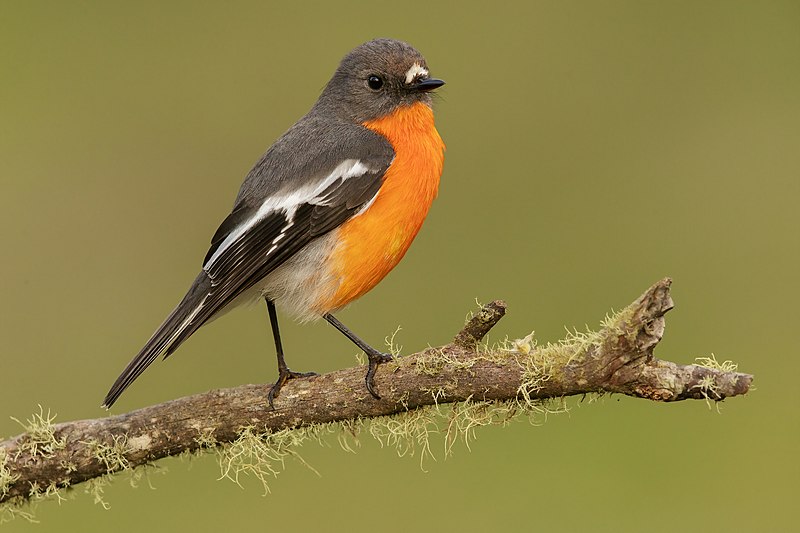
The Flame Robin is a small passerine bird native to Australia. It has bright red feathers on its chest and gets its name from the fiery colouring of these features.
This robin can be found in more excellent areas of south-eastern Australia, including Tasmania. While it’s not an uncommon sight, the Flame Robin isn’t particularly abundant either.
Its diet consists primarily of insects and other invertebrates, which it finds while foraging through leaf litter or low vegetation. The species is sexually dimorphic, with males having more vibrant plumage than females.
Nevertheless, both genders have striking colours that will catch any birdwatcher’s eye.
Scientific classification:
| Kingdom | Animalia |
| Phylum | Chordata |
| Class | Aves |
| Order | Passeriformes |
| Family | Petroicidae |
| Genus | Petroica |
| Species | P. phoenicea |
Also Featured In: birds of orange, Birds that Live in Kangaroo Island
4. Brown Thornbill
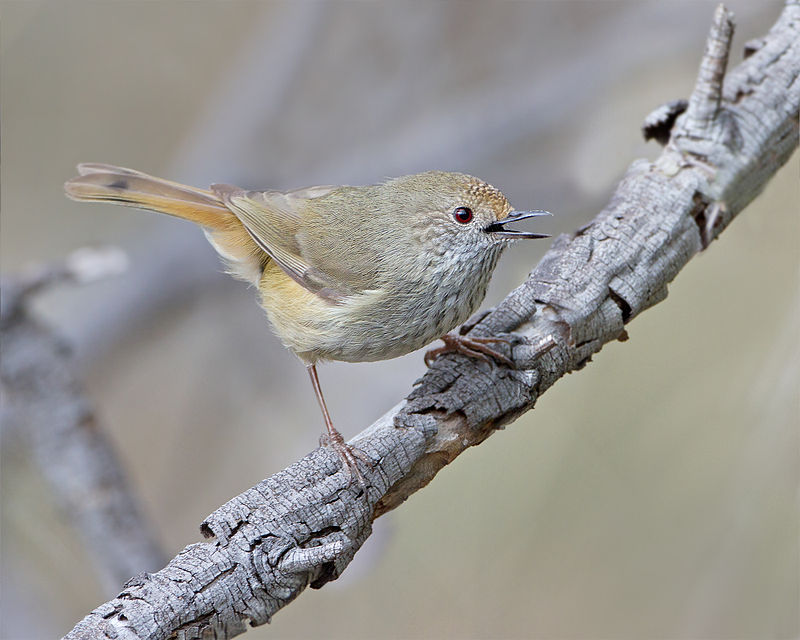
The Brown thornbill is a small bird native to eastern and south-eastern Australia, including Tasmania. With a maximum length of 10 cm, the bird is predominantly brown, grey, and white in appearance.
It belongs to the order Passeriformes and the family Acanthizidae, with the species consisting of five different subspecies. The bird’s diet mainly includes insects.
Its habitat includes various forest types, woodlands, and heaths, where it prefers to inhabit the lower layers of vegetation.
The Brown thornbill is known to be a skilful forager, and it generally feeds on insects found on the bark and leaves of trees.
The bird’s beautiful plumage and melodious chirping make it popular among birdwatchers and nature enthusiasts.
Scientific classification:
| Kingdom | Animalia |
| Phylum | Chordata |
| Class | Aves |
| Order | Passeriformes |
| Family | Acanthizidae |
| Genus | Acanthiza |
| Species | A. pusilla |
Also Featured In: Birds that Live around Victoria, Common Melbourne Birds
5. Tasmanian Scrubwren
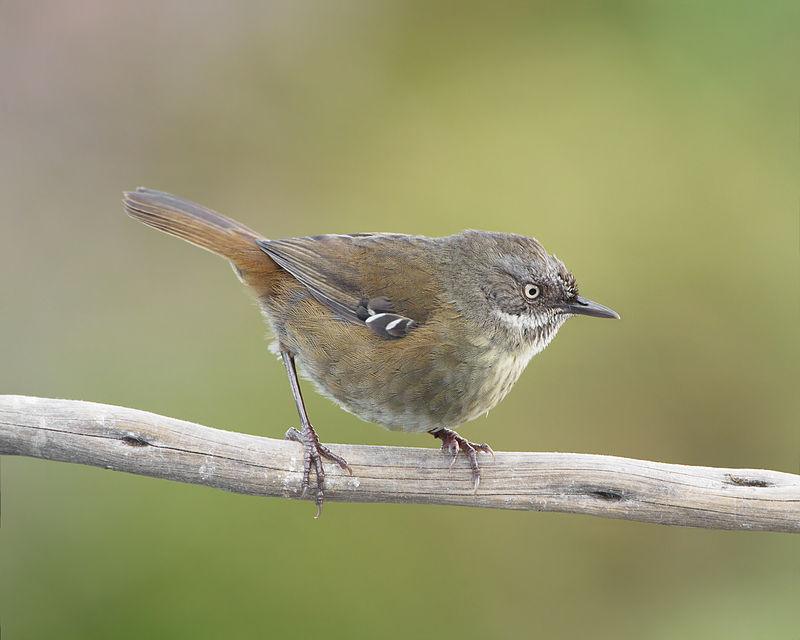
The Tasmanian scrubwren, also known as the brown scrubwren, is a unique bird species that can only be found in Tasmania and King Island.
It usually lives in the understory of various habitats such as rainforest, woodland, dry forest, swamps, and coastal scrublands.
This classification is no longer accepted despite being formerly placed in the Pardalotidae family.
The Tasmanian scrubwren is known for its small size and brown-coloured plumage. It has a pointed bill and long tail that help it forage on the ground and climb on vertical surfaces.
This bird species is a vital player in the ecosystem, contributing to seed dispersal and insect control.
It is a pleasure for birdwatchers and nature enthusiasts to glimpse the Tasmanian scrubwren in its natural habitat.
Scientific classification:
| Kingdom | Animalia |
| Phylum | Chordata |
| Class | Aves |
| Order | Passeriformes |
| Family | Acanthizidae |
| Genus | Sericornis |
| Species | S. humilis |
Also Featured In: Birds of Tasmania,
6. Scrubtit
The Scrubtit bird is a small species that can be found in Tasmania and King Island in Australia. They are known to inhabit temperate rainforests, Nothofagus beech forests, and eucalypt woodlands.
Resembling the Sericornis scrubwrens, the Scrubtit is a part of the thornbill family Acanthizidae and is the sole member of the Acanthornis genus.
Despite their small size, Scrubtits are known for their distinct appearance, with a light-coloured stripe running over their eye and a pale grey body.
Because of their natural habitat, they are well-suited for navigating thick vegetation and underbrush, making them an important member of the ecosystem in which they dwell.
With their impressive agility, the Scrubtit is a testament to the sheer diversity of wildlife in Australia.
Scientific classification:
| Kingdom | Animalia |
| Phylum | Chordata |
| Class | Aves |
| Order | Passeriformes |
| Family | Acanthizidae |
| Genus | Acanthornis Legge, 1887 |
| Species | A. magna |
7. King Island Emu
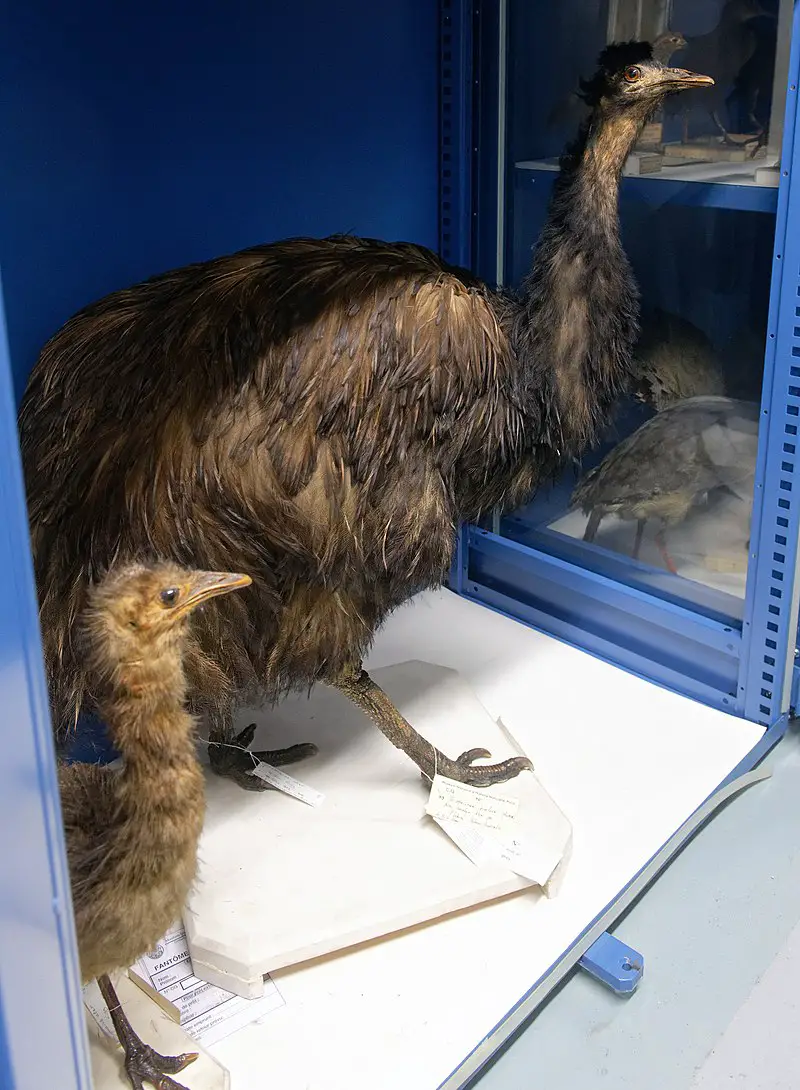
The King Island emu was a subspecies of an emu that lived only on King Island, which is located in the Bass Strait between mainland Australia and Tasmania.
This emu was closely related to the Tasmanian emu, and the two subspecies belonged to the same population until around 14,000 years ago when King Island and Tasmania became separated.
The King Island emu was small in size, and unfortunately, it is now extinct.
Despite its disappearance from our world, the King Island emu remains an important part of Australia’s natural history and serves as a reminder of the importance of conservation efforts to protect vulnerable animals from extinction.
Scientific classification:
| Kingdom | Animalia |
| Phylum | Chordata |
| Class | Aves |
| Infraclass | Palaeognathae |
| Order | Casuariiformes |
| Family | Casuariidae |
| Genus | Dromaius |
| Species | D. novaehollandiae |
| Subspecies | †D. n. minor |
8. Emus
The emu, a flightless bird, belongs to the genus Dromaius, which is native to Australia. They are the only surviving species within the genus. Emus are known for their fast running speed and can reach up to 30 miles per hour.
They have distinctive feathers that are brown in colour and are used for both insulation and display. Emus have a long neck and a small head with dark eyes.
They have a varied diet that includes vegetation and insects. Emus are social birds and live in small family groups, usually consisting of a male and female pair and their offspring.
They are an important cultural symbol in Australia and have been featured on its coat of arms since 1912.
Scientific classification:
| Kingdom | Animalia |
| Phylum | Chordata |
| Class | Aves |
| Infraclass | Palaeognathae |
| Order | Casuariiformes |
| Family | Casuariidae |
| Genus | Dromaius Vieillot, 1816[1] |
Conclusion
King Island is home to a diverse range of bird species, each contributing to the island’s rich natural heritage.
From the iconic Yellow-tailed Black Cockatoo and Cape Barren Goose to the more elusive Scarlet Robin and Eastern Curlew, these avian inhabitants make King Island a haven for birdwatching enthusiasts and nature lovers alike.
While some species, like the King Island Emu, are sadly extinct, the island continues to provide a sanctuary for various birdlife.
Whether you’re exploring the woodlands, coastlines, or estuaries, the birdwatching experience on King Island promises an opportunity to connect with and appreciate the island’s unique ecological diversity.